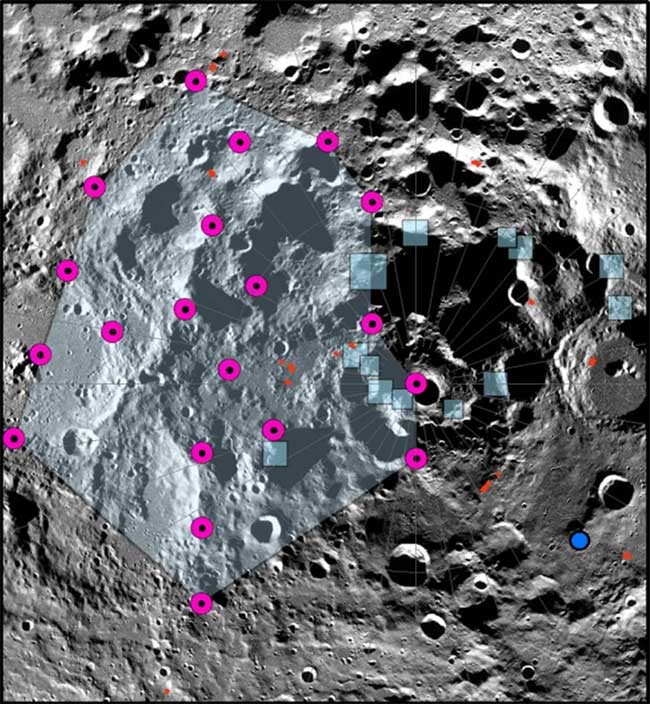As the Artemis 3 program is set to launch to the Moon in 2026, experts are concerned about whether lunar earthquakes could affect the landing.
When planning the lunar landing sites for crewed missions from the upcoming Artemis mission program, planners must consider a multitude of parameters about the Moon, including the shape of the terrain, biosphere characteristics, climate, and more.
However, experts now believe it is also crucial to pay attention to earthquakes and landslides on the Moon. Geoscientists in a new study funded by NASA emphasize that this is no longer a hypothetical argument.

As the Artemis 3 program is set to launch to the Moon in 2026, geologists are concerned about whether lunar earthquakes could affect the landing. (Photo: NASA)
When examining the lunar south pole – located near the planned landing area for the Artemis 3 program (scheduled for landing in 2026), geoscientists have identified geological fault lines believed to be related to a major lunar earthquake that occurred approximately 50 years ago.
On March 13, 1973, a particularly strong lunar earthquake shook the seismometers of the Apollo spacecraft from the direction of the Moon’s south pole. Decades later, the lunar Reconnaissance Orbiter flew over the southern region and also detected many fault line networks. Now, with the discovery of additional geological fault lines, it provides more crucial evidence to better understand extreme phenomena on the Moon.
Experts suggest that Earth’s Moon is currently shrinking as its core gradually cools over the past several hundred million years. Similar to how a grape shrivels as it dries into a raisin, the Moon also develops wrinkles as it contracts. However, unlike the pliable skin of a grape, the surface of the Moon is very brittle, and the compression of geological materials is weak, making cracks more likely to form when earthquakes occur.
This new discovery adds further evidence to the picture of earthquakes on the Moon. As humanity aims to set foot on the Moon once again, they must plan and prepare for the possibilities that could arise in the geological area just beneath their feet.
Nicholas Schmerr, a geologist involved in the new study, stated: “As we approach the kickoff of the crewed Artemis mission, it is crucial to keep our astronauts, equipment, and infrastructure as safe as possible.”
Renee Weber, a co-author of the new study at NASA’s Marshall Space Flight Center, added: “To better understand the seismic risks posed to human activities on the Moon in the future, we need more new seismic data on this planet.”





















































